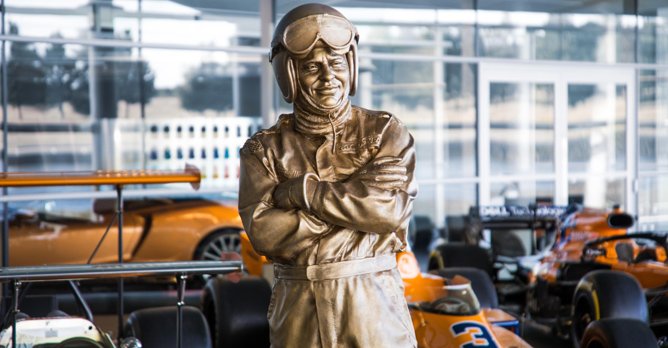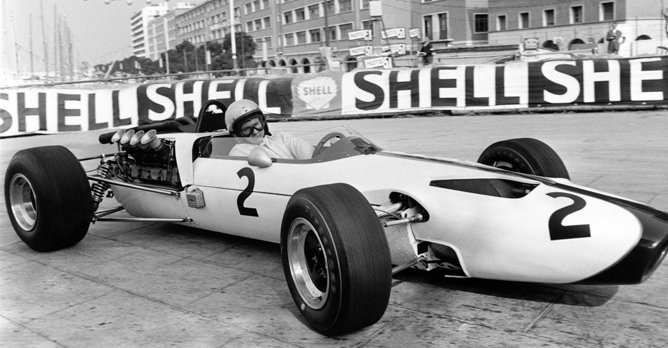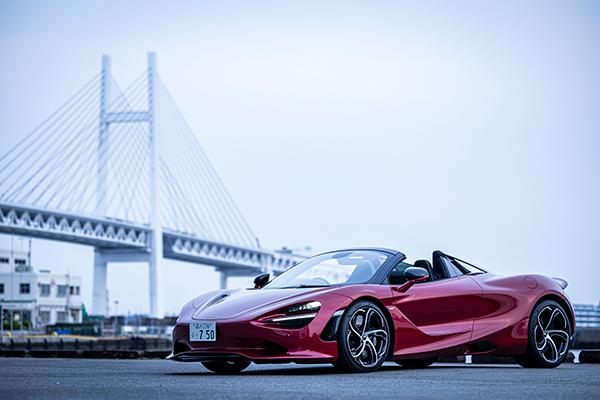McLaren marks 50th anniversary of Bruce McLaren's death
04 Jun 2020|300 views
McLaren remembers the life and achievements of Bruce McLaren, who in 1963 founded Bruce McLaren Motor Racing Ltd, the company that has evolved through almost six decades to become today's McLaren.
2 June 2020 marks half a century since the death of the pioneering racing driver and engineer, who was killed in 1970 while testing one of his Can-Am racing cars at the Goodwood Circuit in West Sussex, U.K.
In commemoration of her father, Amanda McLaren - a McLaren Automotive brand ambassador - unveiled a life-sized statue of Bruce McLaren during a short private ceremony at the McLaren Technology Centre (MTC) in Woking, Surrey, U.K.
Fifty lighted candles were also placed around a 1970 McLaren M8D displayed at McLaren's headquarters. The 'sister car' to the M8D in which Bruce McLaren was killed, it was driven to championship victory in the 1970 Can-Am race series by Bruce's team-mate and fellow Kiwi racer, Denny Hulme.
This was the second time Hulme had secured the championship, McLaren himself taking the honours in 1967 and 1969. The McLaren team dominated Can-Am racing from 1967 for five consecutive years.
The bronze statue of Bruce McLaren was created by painter and sculptor, Paul Oz. Globally recognised for his motorsport-inspired art, Oz was previously commissioned by McLaren Racing to produce a sculpture of Ayrton Senna that is also at the MTC. Senna drove for McLaren for six years, winning all three of his Formula 1 World Championships at the wheel of a McLaren in 1988, 1990 and 1991.
Bruce McLaren himself debuted the newly formed McLaren team in Grand Prix racing in 1966, competing in Monaco. He also delivered the maiden McLaren Grand Prix victory, winning in 1968 at the Spa-Francorchamps circuit in Belgium. This was Bruce's fourth Formula 1 victory, adding to the three he recorded driving for Cooper.
While Bruce McLaren himself never produced road cars in any number, the McLaren name was further cemented in automotive history with the introduction in 1992 of the McLaren F1, the car famously going on in race guise to win the 24 Hours of Le Mans endurance race in 1995 at the team's first attempt.
Further tributes will be shared on the McLaren website on 2 June at 12:19 BST - the time that Bruce left the Goodwood circuit pitlane for the final time on Tuesday 2 June 1970 - and can be found here.
McLaren remembers the life and achievements of Bruce McLaren, who in 1963 founded Bruce McLaren Motor Racing Ltd, the company that has evolved through almost six decades to become today's McLaren.
2 June 2020 marks half a century since the death of the pioneering racing driver and engineer, who was killed in 1970 while testing one of his Can-Am racing cars at the Goodwood Circuit in West Sussex, U.K.
In commemoration of her father, Amanda McLaren - a McLaren Automotive brand ambassador - unveiled a life-sized statue of Bruce McLaren during a short private ceremony at the McLaren Technology Centre (MTC) in Woking, Surrey, U.K.
Fifty lighted candles were also placed around a 1970 McLaren M8D displayed at McLaren's headquarters. The 'sister car' to the M8D in which Bruce McLaren was killed, it was driven to championship victory in the 1970 Can-Am race series by Bruce's team-mate and fellow Kiwi racer, Denny Hulme.
This was the second time Hulme had secured the championship, McLaren himself taking the honours in 1967 and 1969. The McLaren team dominated Can-Am racing from 1967 for five consecutive years.
The bronze statue of Bruce McLaren was created by painter and sculptor, Paul Oz. Globally recognised for his motorsport-inspired art, Oz was previously commissioned by McLaren Racing to produce a sculpture of Ayrton Senna that is also at the MTC. Senna drove for McLaren for six years, winning all three of his Formula 1 World Championships at the wheel of a McLaren in 1988, 1990 and 1991.
Bruce McLaren himself debuted the newly formed McLaren team in Grand Prix racing in 1966, competing in Monaco. He also delivered the maiden McLaren Grand Prix victory, winning in 1968 at the Spa-Francorchamps circuit in Belgium. This was Bruce's fourth Formula 1 victory, adding to the three he recorded driving for Cooper.
While Bruce McLaren himself never produced road cars in any number, the McLaren name was further cemented in automotive history with the introduction in 1992 of the McLaren F1, the car famously going on in race guise to win the 24 Hours of Le Mans endurance race in 1995 at the team's first attempt.
Further tributes will be shared on the McLaren website on 2 June at 12:19 BST - the time that Bruce left the Goodwood circuit pitlane for the final time on Tuesday 2 June 1970 - and can be found here.
Latest COE Prices
April 2025 | 1st BIDDING
NEXT TENDER: 23 Apr 2025
CAT A$97,724
CAT B$117,899
CAT C$68,782
CAT E$117,002
View Full Results Thank You For Your Subscription.























